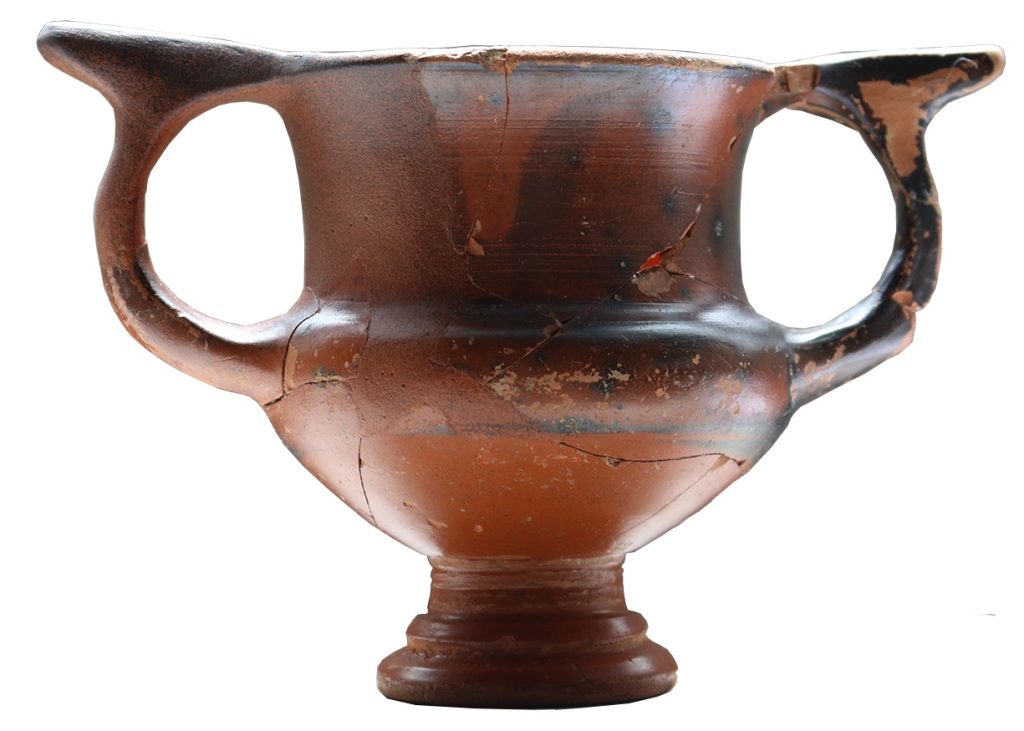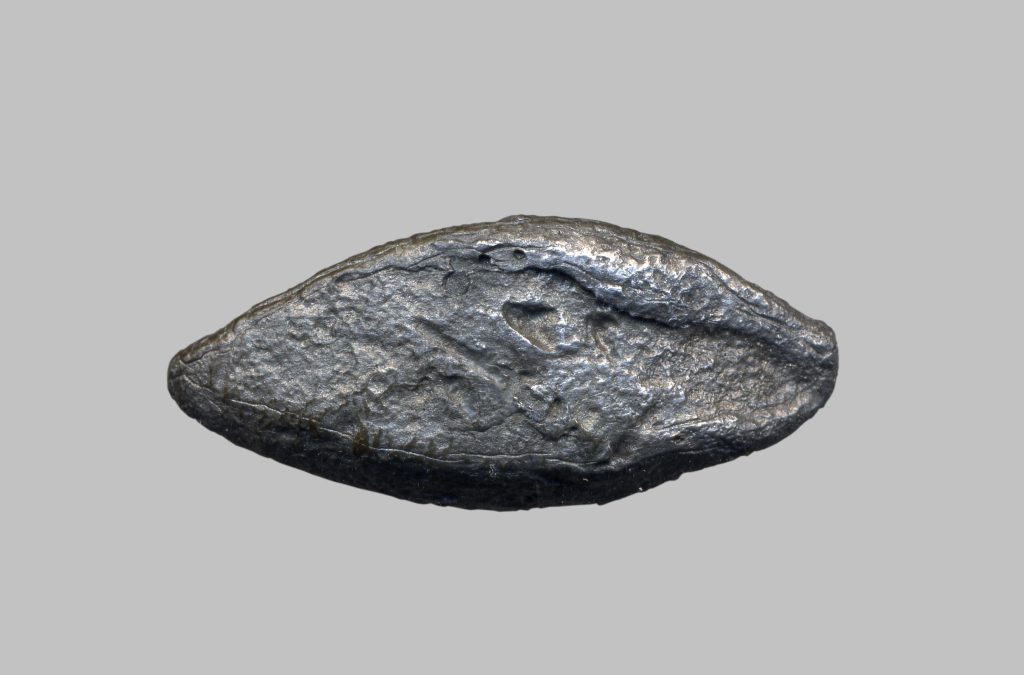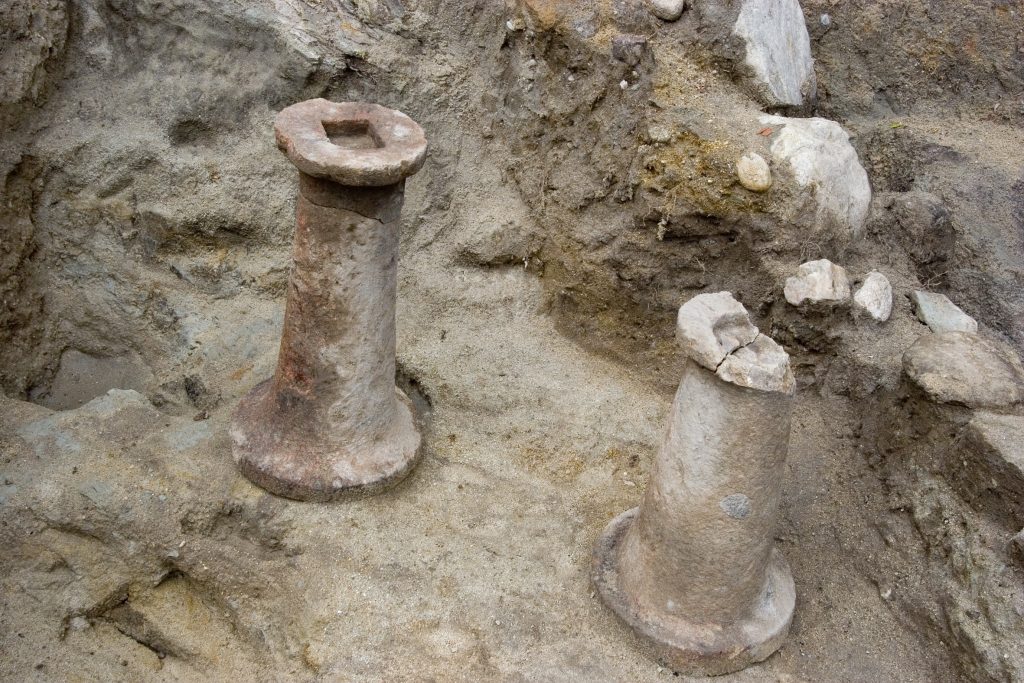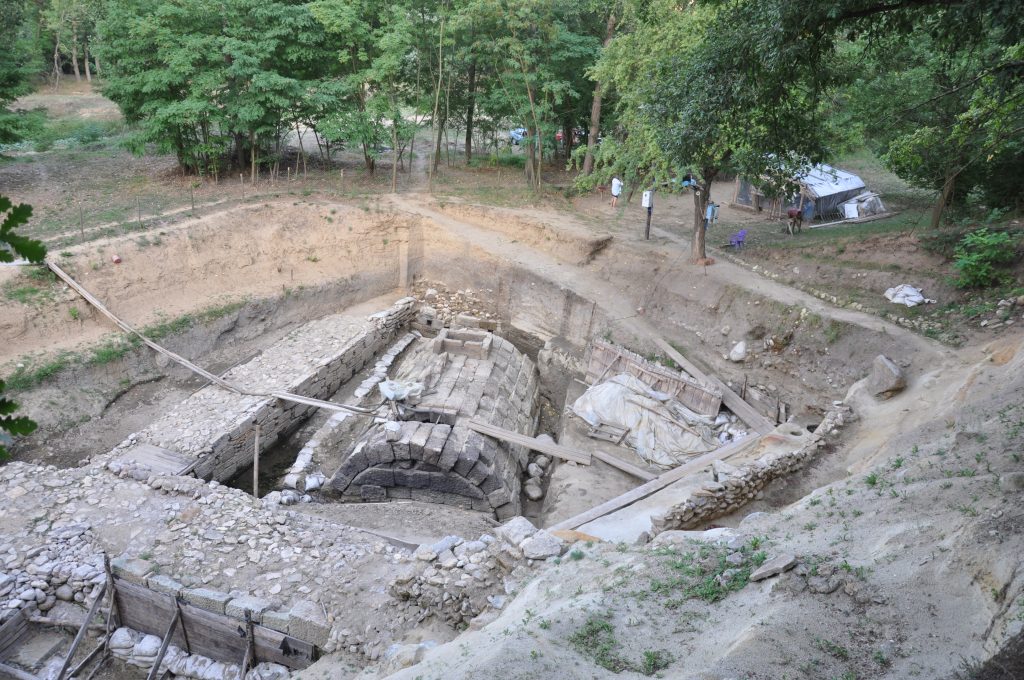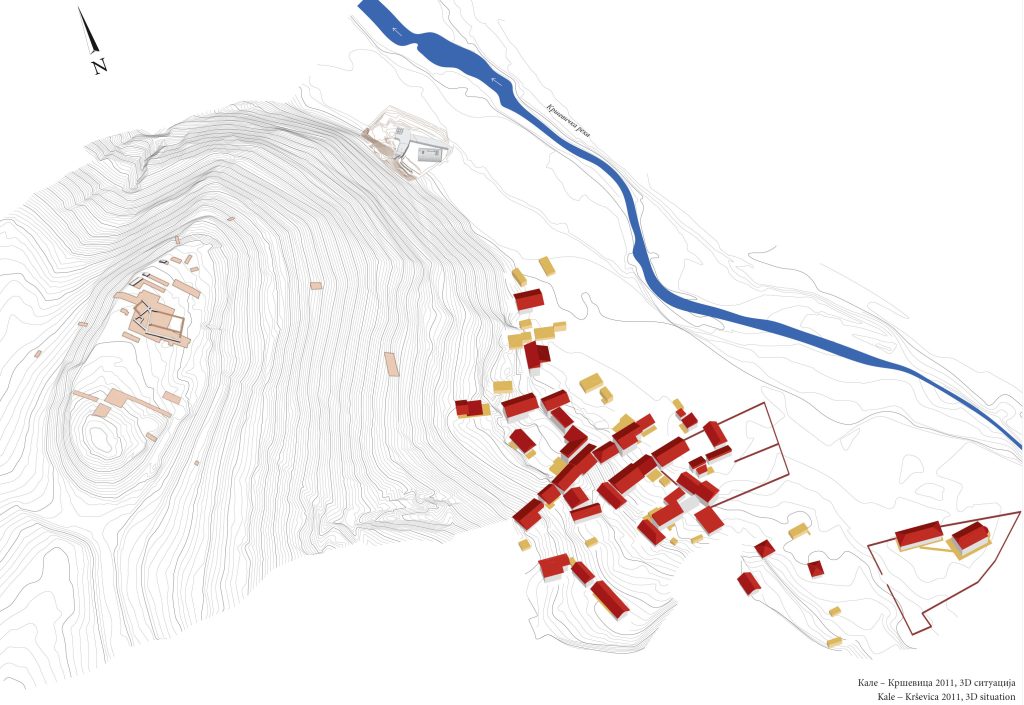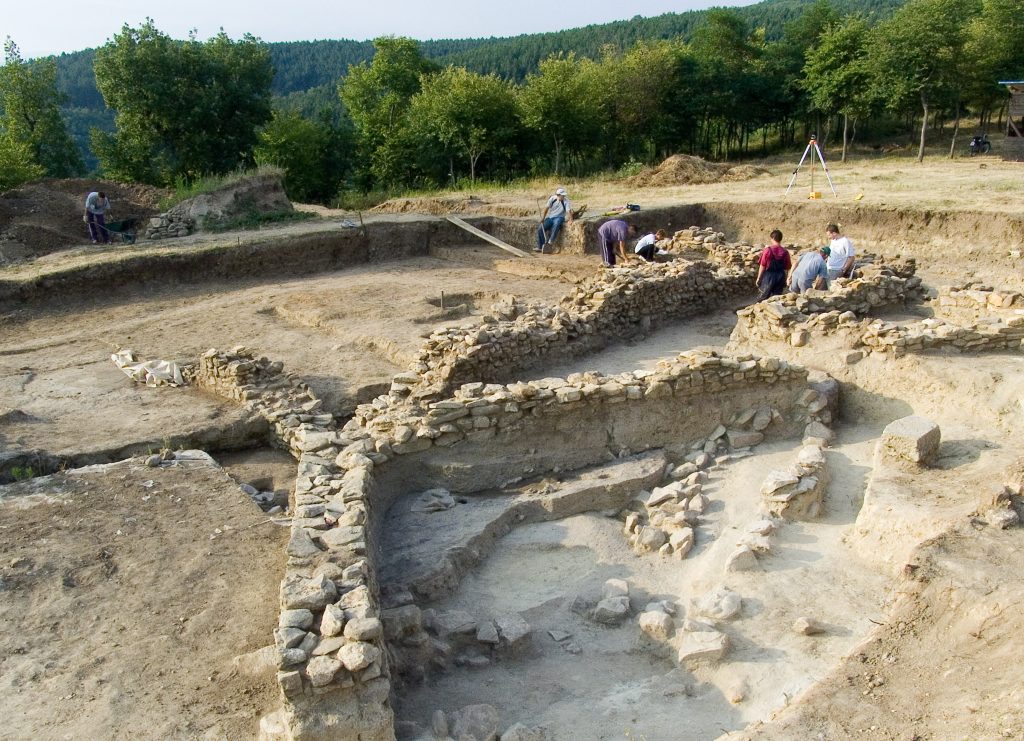KALE-KRŠEVICA
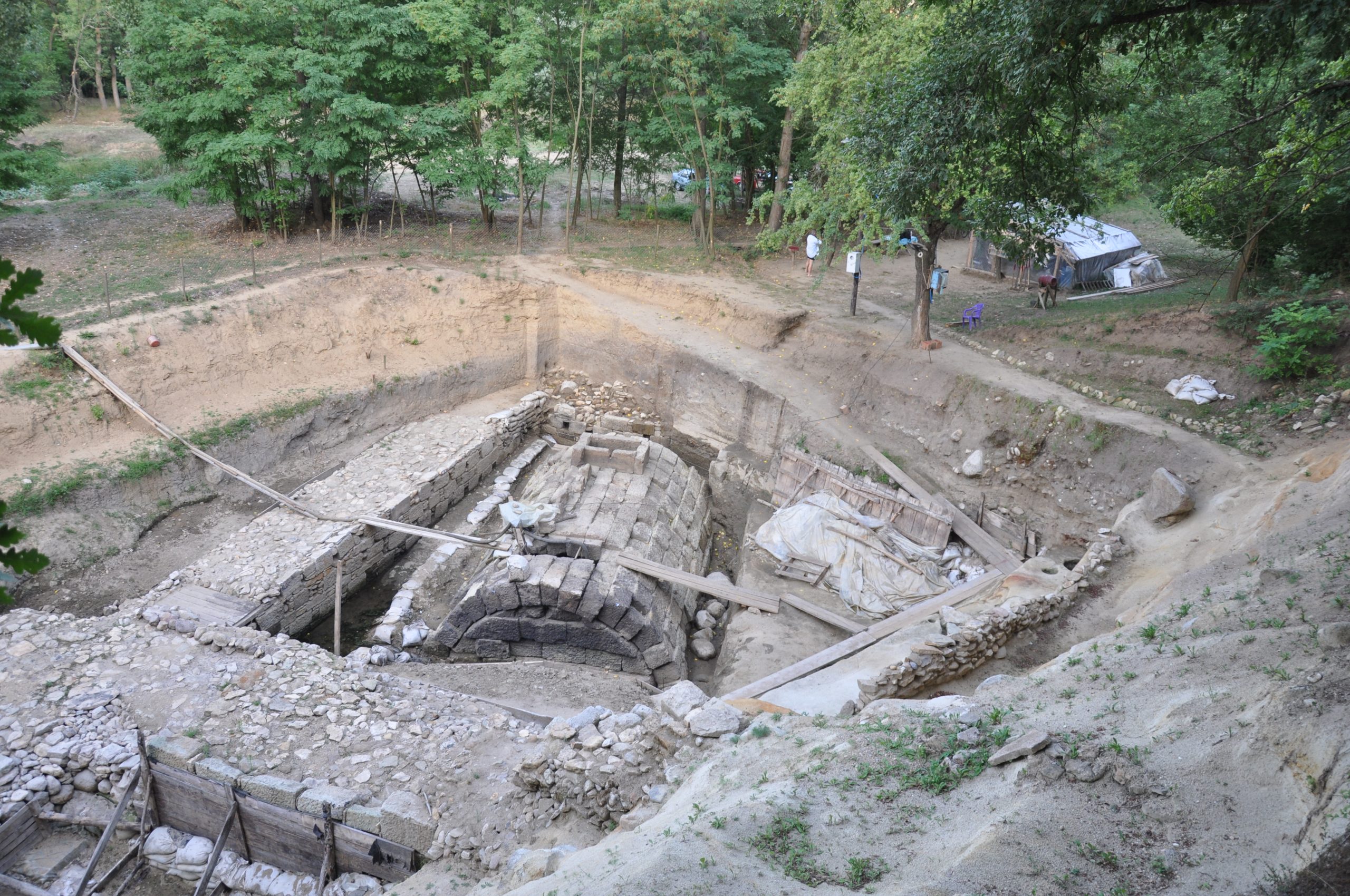
Project name: Archaeological site Kale-Krševica
Project director: Dr Ivan Vranić
Team members:
Vera Krstić, National Museum Belgrade
Dr. Aleksandar Bandović, National Museum Belgrade
Dr. Dragana Antonović, Archaeological Institute
Jovan Mitrović, National Museum Belgrade
Dr. Selena Vitezović, Archaeological Institute
Goran Mitrović, National Museum of Vranje
Saša Zivanović
Collaborations:
National Museum, Belgrade
National Museum, Vranje
Kale-Krševica is a fortified protohistoric town near Ristovac, in the village of Krševica (in the municipality of Bujanovac), in the Republic of Serbia’s Pčinj district. The site is divided into three sections: the acropolis, hills, and lower town. The acropolis was discovered with the oldest indications of settlement dating back to the late decades of the 5th century B.C. The fort covered an area of least 4 hectares and survived until the first decades of the 3rd century. The design of the walls and other public structures of the second phase of Krševica demonstrate a thorough understanding of masonry traditions in ancient Macedonia and Greek towns on the Aegean Sea’s northern coastline. The purpose of the study of the site is to establish to what degree the local society grew to resemble the Greek and Macedonian worlds throughout more than 150 years of intensive contact and consumption of foreign items and products, and how much it remained distinct.
The site of Kale is located not far from the town of Ristovac, in the village of Krševica (the municipality of Bujanovac), in the Pčinj district of the Republic of Serbia. The site was discovered in 1965 by Milan Jovanović, curator of the National Museum in Vranje. Jovanović, in cooperation with Ivan Mikulčić from Skopje, also led the first sounding excavations over the following several years. The next mention of Kale-Krševica in archaeological literature is related to the survey of the Vranje basin in the late 1970s, as part of the SANU project entitled “Fortified Illyrian settlements on the territory of the S.R. Serbia”, which was directed by Milutin Garašanin. No excavations were carried out in Krševica at that time since there was already information from the 1960s. Systematic excavations began in 2001 under the direction of Petar Popović from the Archaeological Institute. At that time, collaboration was established with several different institutions, primarily with the National Museum in Belgrade and the National Museum in Vranje.
This fortified protohistoric settlement is situated on the northern slopes of Mount Rujan, a few kilometres south of the modern highway E75. The small Krševička river flows next to the site and into the South Morava a little further on. In terms of space, the site can be divided into three areas that follow the geographical characteristics of the terrain: the acropolis, the slopes, and the lower town. The oldest traces of settlement from the last decades of the 5th century B.C. were discovered on the acropolis, and the settlement spread over time in the direction of the other two areas. In the first decades of the 3rd century, when it was at its most powerful and home to the largest number of inhabitants, the fort covered an area of at least 4 hectares.
In a chronological sense, two phases can be distinguished: the first, which began in the last decades of the 1st century and lasted until the fifth decade of the 4th century B.C., and the second, which lasted continuously until the first decades or the middle of the 3rd century B.C.
The primary characteristic of the material culture is the very close stylistic-typological, but also technological, similarity to the forts and cities of the Greek world. Of particular note is the architecture of the massive ramparts and other public buildings of the second phase, indicating a precise knowledge of masonry practices in ancient Macedonia and Greek cities in the area of the northern coast of the Aegean Sea. Several discovered ramparts on Krševica were built with regular stone blocks using the emplekton technique, which resulted in the lower parts being several metres high. The upper parts were formed on these foundations with the help of wooden beams and bricks. However, their original height is difficult to determine.
On the top of these buildings there were probably paths with artillery. Due to the use of adobe, the ramparts had to be covered with roof tiles as protection from the rain. Another vital find to be highlighted is a tank with a barrel vault (10×6 metres at the base), which collected underground water. The appearance of such a massive and very early building with a barrel vault, the construction of which most likely dates back to the transition from the 4th to the 3rd century B.C. (only a couple of decades after the construction of the famous tomb in Vergina, which many believe represents the tomb of Philip II), raises numerous questions about the nature of the connection of the population of this settlement with the Greek world. The technology of barrel vaults made of trapezoidal stone in Greece and Macedonia was practiced only during the last decades of the 4th century B.C., and it is considered that Macedonian court architects designed it.
Mobile finds also show remarkable similarities with objects from the southern parts of the Balkans. The most numerous are the so-called grey Hellenized ceramics, which, in addition to Krševica, are characteristic of multiple sites from the second half of the 1st millennium BC in Bulgaria and North Macedonia. The primary characteristic of this pottery is the shapes that correspond to well-known forms from Greece, such as skyphos, kantaros, hydria, oinochoa, pitos, bowls, etc. Also, there are very close parallels in the technological aspects of production—comparable ornaments, colours, variants of grey coating, etc. Throughout the site’s life, there was a conspicuous consumption of imported Greek pottery. Red-figure varnished vessels and West Slope techniques of Attic production stand out, as do the transport amphorae from numerous Aegean centres (Thasos, Mende, Chios, etc.).
Considering that the excavations were temporarily interrupted in 2018 due to problems related to property and legal relations, the current focus of the research is on interpreting the discovered contexts of the findings and their publication. The results so far show that the site was in a very close relationship first with the numerous Greek colonies on the northern coast of the Aegean Sea (during the late 5th and the first half of the 4th century B.C.) and later (from the time of Philip and Alexander the Great) with ancient Macedonia. This social and historical context and the discovered material culture opened up space for research into the process of the “Hellenization” of the Balkan interior. The study’s goal is to determine to what degree, during more than 150 years of intensive communication and consumption of foreign objects and products, the local society began to resemble the Greek and Macedonian world and how much it remained different.
Selected bibliography:
Popović, P. 2005.Kale – Krševica: Investigations 2001-2004, Interim Report. Zbornik Narodnog muzeja XVIII-1: Beograd: 141–174.
Popović, P. 2006.Central Balkans between the Greek and Celtic World: Case Study Kale Krševica, in: Homage to Milutin Garašanin, eds. N. Tasić & C. Grozdanov, 523–536, Beograd: Serbian Academy of Sciences and Art and Macedonian Academy of Sciences and Art.
Popović, P., Vranić, I. 2008. The textile industry at Krševica (southeastern Serbia). Starinar LVI: 309–326.
Вранић, И. 2009. Теоријско-методолошки проблеми тумачења керамичког материјала са локалитета Кале у Кршевици. Зборник Народног музеја XIX-1: 163–203.
Popović P., Vukadinović M. 2011. Water Supply System at Krševica (4th century BC). Starinar LXI: 155–170.
Popović, P. 2012. Central Balkans between Greek and Celtic World – Kale Krševica 2001-2011, National Museum in Belgrade (Exhibition Catalogue), 11–51. Belgrade: National Museum.
Vranić, I. 2012.Urbanizacija u arheološkim interpretacijama: primer “helenizovanih naselja“ u unutrašnjosti Balkana, Етноантрополошки проблеми, н.с., Год. 7, Св. 3:731–746.
Vranić, I. 2012.The Classical and Hellenistic Economy and the “Paleo-Balkan” Hinterland:A Case Study of the Iron Age “Hellenized Settlements”. Balcanica XLIII: 29–50.
Popović, P., Vranić, I. 2013.Оne possible location of Damastion – Kale by Krševica (south-eastern Serbia), in: The Bosporus: Gateway between the Ancient West and East (1st Millennium BC – 5th Century AD) (Proceedings of the Fourth International Congress on Black Sea Antiquities Istanbul, 14th–18th September 2009), eds. G. R. Tsetskhladze, S. Atasoy, A. Avram, Ş. Dönmez & J. Hargrave, 309–313. Oxford: Archaeopress, BAR International Series 2517.
Vranić, I. 2014. ‘Hellenization’ and ethnicity in the continental Balkan Iron Age, in: Fingerprinting the Iron Age, eds. C. Popoa & S. Stodartt, 161−172. Oxford & Philadelphia: Oxbow Books.
Vranić, I. 2014.The ‘Hellenization’ process and the Balkan Iron Age, in: The Edges of the Roman World, eds. M.A. Janković, V.D. Mihajlović & S. Babić, 33−47. Newcastle upon Tyne: Cambridge Scholars Publishers, 33−47.
Vranić, I. 2016. “Ritualno” i “struktuirano” odbacivanje u arheološkim interpretacijama: primer sistema za vodosnabdevanje na lokalitetu “Kale” u Krševici. Етноантрополошки проблеми, н.с., Год. 11, Св. 3: 661−678.
Vranić, I. 2018. Interpreting Iron Age violence or violent nature of archaeological narratives? The case of Kale-Krševica (south-eastern Serbia), in Violence in Prehistory and Antiquity/Die Gewalt in der Vorgeschichte und im Altertum, ed. E. Nemeth, 23–37. Kaiserslautern und Mehlingen: Parthenon Verlag.
Vranić, I. 2019. A barrel-vaulted reservoir at Kale-Krševica: hydraulic technology and Iron Age ‘Hellenisation’ in Serbia. Antiquity 93(367): 144–162.
Vranić, I. (u štampi). Helenizacija u novom ključu: potrošnja grčke firnisovane keramike, “umrežavanje” i kulturne promene na Krševici, V–III vek pre n.e.. Beograd: Arheološki institut i Narodni muzej



